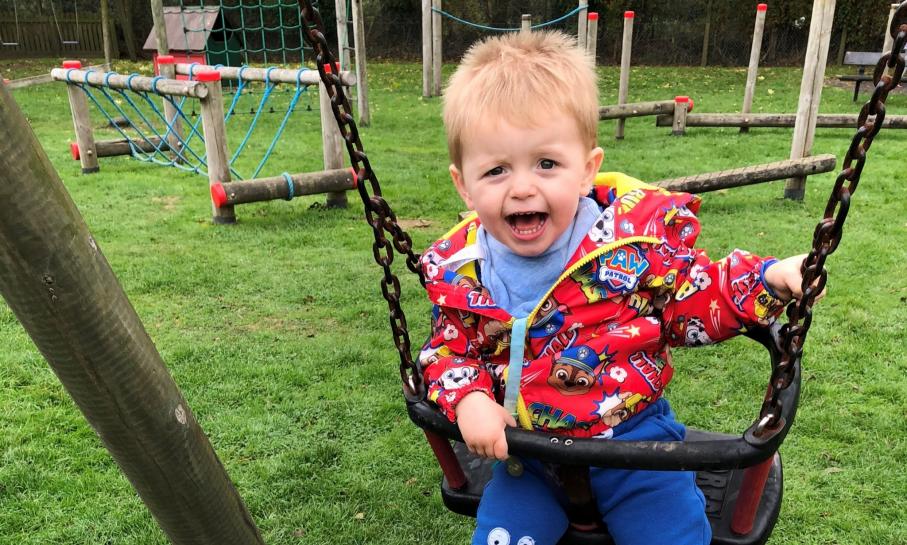
Here, some people share their experiences of applying for benefits and going through the assessment process…
Louise Scott
Louise was diagnosed with FSHD when she was 17. Over time her mobility has got worse, and now she can take just a few steps at a time. Everyday tasks are challenging. For example, lifting a kettle is increasingly difficult, and Louise can’t use a knife. She also finds it incredibly difficult to rise from a low seat or do up buttons on clothing.
Louise, who applied for PIP in 2017, says:
I found [it] an emotionally challenging process. The questions were biased towards what you can’t do or what you struggle with – I guess rightly so under the circumstances, yet it’s another mental hurdle to overcome. Afterwards, I felt really gloomy for a few days.
Lynne Earthy
Lynne was diagnosed with a rare form of spinal muscular atrophy when she was 40. She is now unable to work, and took ill-health retirement when she was 46. She uses a wheelchair, walking sticks and a wheeled walker to get around.
I would like assessors to have a better understanding of what disabled people have to cope with. My assessor stated that l could walk between 30 and 60 metres with no problem, but she didn’t see me walk anywhere. The thing that upset me most was she said my limbs showed no sign of muscle wastage, despite no physical examination taking place.
Alex Gosney
In late December 2017, Alex – who has mitochondrial myopathy – received a letter from the Department for Work and Pensions. It told him he would be changing from Disability Living Allowance (DLA) to Personal Independence Payment (PIP) and would need to re-apply. This caused Alex a lot of concern and worry over the Christmas period. Alex was told the form would need to be completed and returned by 12 February, which was not achievable, so he rang to request an extension and was given two weeks. Alex says:
The whole process of applying for PIP is extremely stressful. I struggle with my mental health, and every time I have to do this kind of thing it has a big impact. Having to talk about personal things in detail to people you don’t know is degrading and embarrassing.
‘M’
M’s application for Disability Living Allowance (DLA) was initially rejected. And when he had his assessment, the centre was not accessible. M says:
The DLA application process was not conducive to helping people at any stage. It felt like being Oliver and asking for some more to eat. You’re made to feel like you’re guilty until proven innocent, and then only on the basis of the assessors’ rules, not the rule of law.
Chloe Smith
Chloe’s three-year-old son, Jenson, has an undiagnosed form of muscular dystrophy. Chloe receives DLA, but could not apply for the mobility component until Jenson was three. Chloe, her partner, Rikki, and Jenson live in an inaccessible property. They were on the local housing list, but removed themselves due to the stress it caused. Chloe says:
I found applying for Disability Living Allowance incredibly difficult. The form is very detailed and specific, and I was really upset and stressed as it was just after Jenson’s diagnosis. I wasn’t offered any help completing the form.
Jennie Newman
Jennie has myotonic dystrophy – the same condition that affects 16 close family members. She has never claimed any benefits until recently, when she applied for Attendance Allowance (AA). She was awarded the lower care component, which came as a surprise. Jennie says:
Age shouldn’t be a factor when considering benefits applications. There’s an assumption that people get old and things are expected to happen. But it doesn’t mean they are entitled to a lesser quality of life.
Mark Farmer
Mark was diagnosed with limb girdle muscular dystrophy in his 30s. During an assessment for PIP, his assessor told him she had never heard of the condition. Mark says:
I have no problem with being assessed, but felt the person who carried out my assessment did not have the training to understand my condition and the changes that occur from day-to-day. My condition has worsened a lot of the past 18 months, but I’ve held off asking to be reassessed due to my experiences in the past.
- You can read the ‘Below standard’ report here. And if you would like to contact our helpline, you can call: 0800 652 6352 or email: info@musculardystrophyuk.org
- If you would like to share your experiences of applying for benefits, click here.
